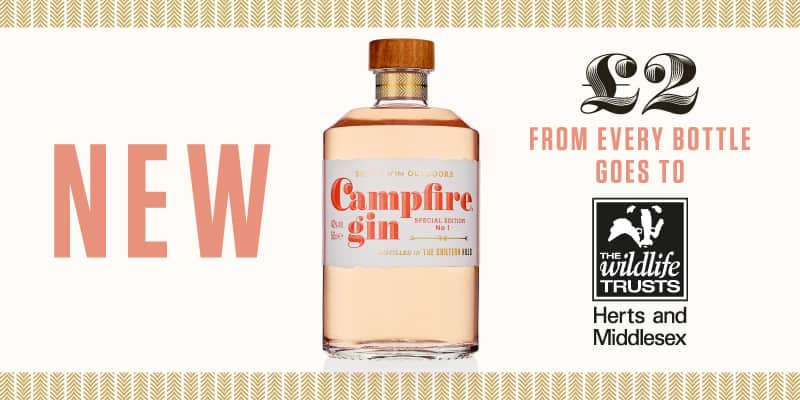
NEW Campfire Gin Special Edition No 1
This video was filmed and produced by Jonah Maddox
Back in early 2016 when we were seeking permission to photograph our Campfire Gin bottle in an outdoor location, we came across Hertfordshire and Middlesex Wildlife Trust. The Trust maintain vast swathes of rural land, including areas around the reservoirs adjacent to the distillery and it was by Wilstone reservoir that the homepage image of our bottle by a fire was taken.
Without the stimulus of alcohol a dialogue between ourselves and the Trust grew into an idea about a collaboration gin to raise awareness of both organisations. Now the simple thing would have been to source botanicals from any of the HMWT managed sites… but then someone mentioned Himalayan balsam.
Himalayan balsam is undeniably attractive when in flower. It's pink orchid like petals held aloft at up to 2.5m from the ground attract bees and insects, and it’s density along riverbanks can provide protection for nesting birdlife, BUT it is also hugely destructive.
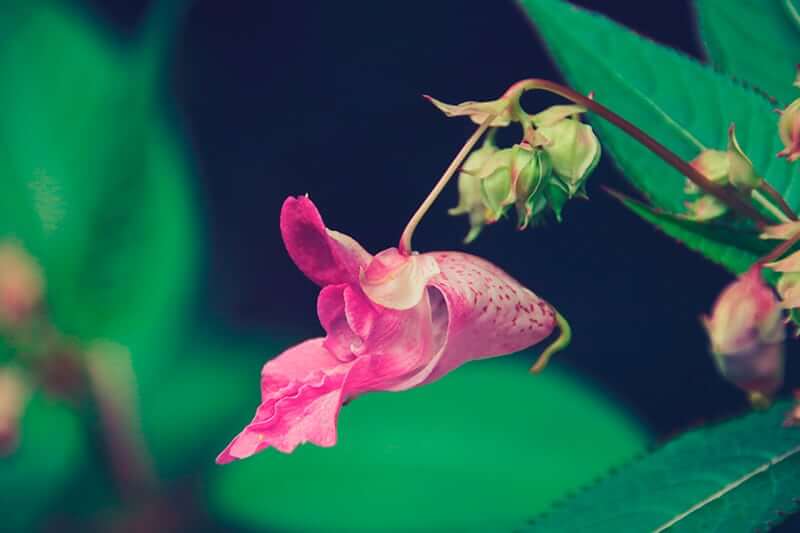
The pretty pink flower of the Himalayan balsam
The plant was introduced to the UK during the Victorian era, however without anything to control its ability to spread (through seed pods that explode and catapult their contents up to 8m), the plant quickly took hold, especially along the banks of lakes, ponds and streams.
Today wildlife trusts, backed by the support of volunteers set about uprooting the plant to reduce its ability to seed and spread. Clearing the Himalayan balsam provides space for native species to grow again and hopefully will be pollinated by the bees that before were unknowing allies to the invader. The removal of the plant is especially important in areas like Panshanger Park, one of the sites we personally took balsam from. It is here that the River Mimram, one of only 180 chalk streams in the world, flows.
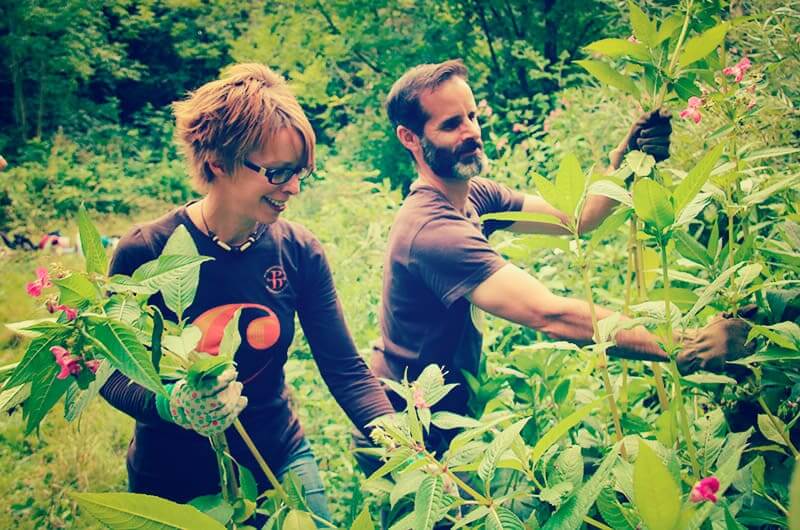
Me and Ben pulling balsam
So what do we do when we’ve pulled up the plants and picked off the petals? Well first we get them back to the distillery where they are washed then air dried for three days before being transferred to muslin bags. After another couple of days the dried petals are then placed into the base gin for a very specific time. Too little and we don’t extract enough colour, too long and we get the introduction of undesirable colour tints and flavours. Then everything is filtered, hand bottled and labelled.
So where can you get hold of this gin? Well further to some great coverage in the national press, on Radio 4 and even BBC London News, the gin was launched last Saturday (29 July) at the HMWT Festival of Wildlife. It is now exclusively retailed at our distillery shop with a few bottles are going out to local pubs.
The aim is to sell 1000 bottles (Himalayan balsam pending), with £2 from the sale of every bottle going back to the Wildlife Trust.
Thanks to Josh Kubale, Charlotte Hussey and the rest of the HMWT team for this fantastic collaboration. Special thanks also to Josh for allowing us to use his photos here.
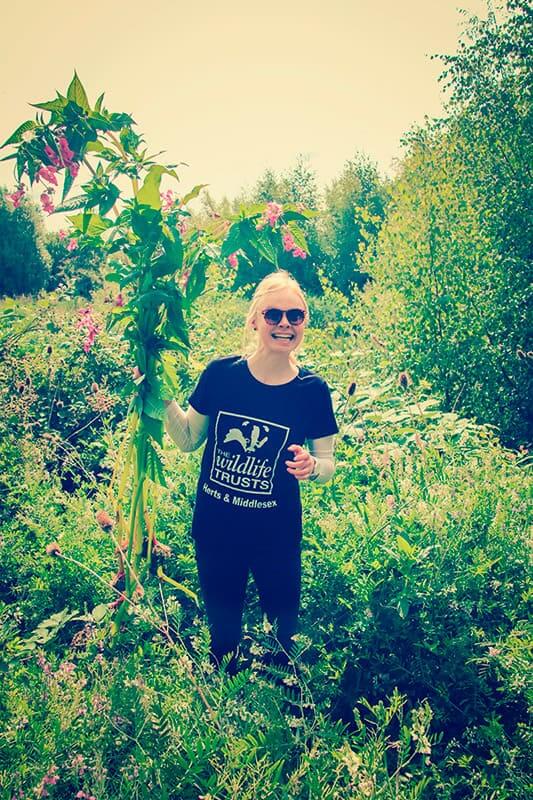
The balsam can grow up to 2.5m, way taller than Sophie!
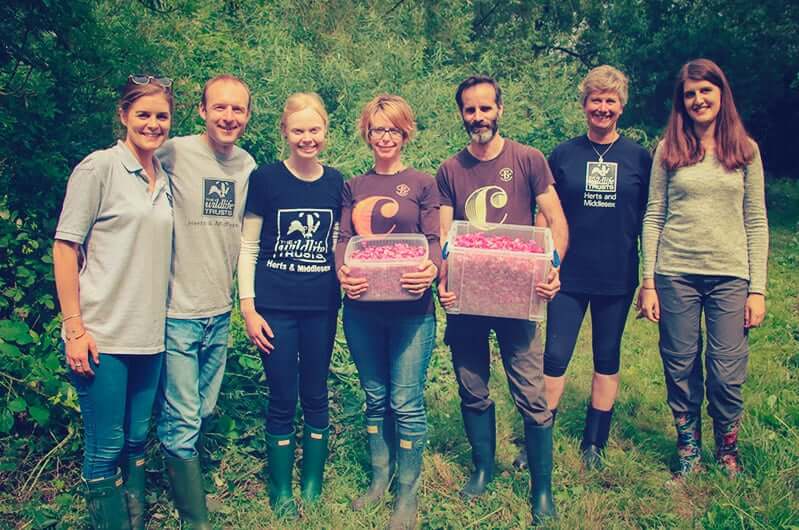
The results after 5 hours of picking with the team from HMWT
